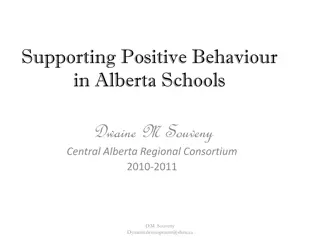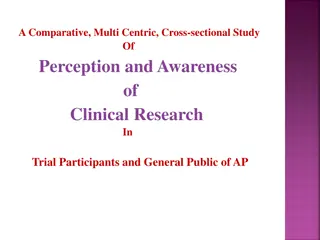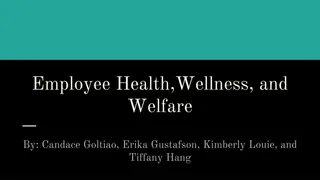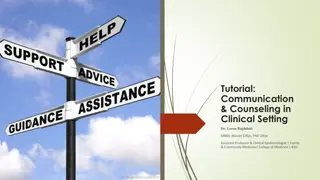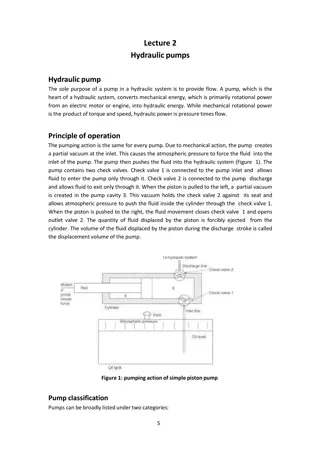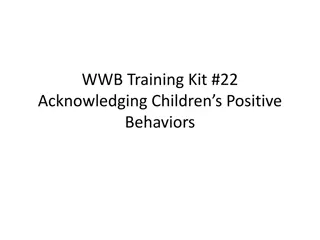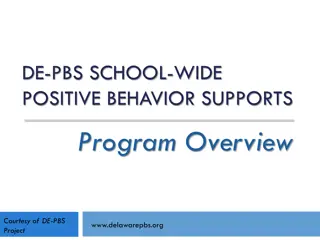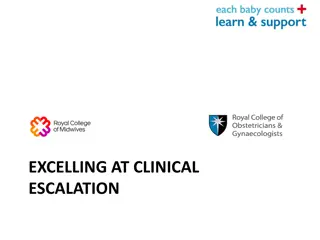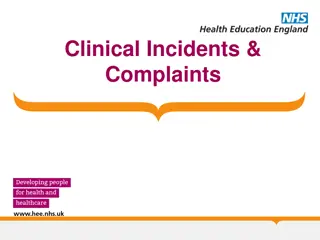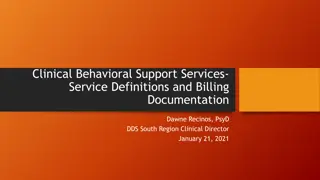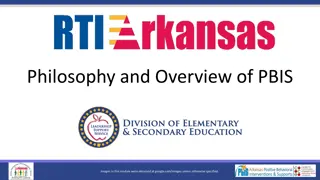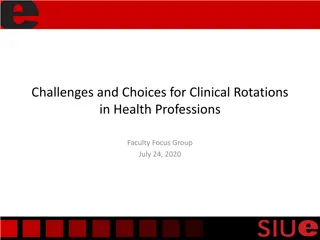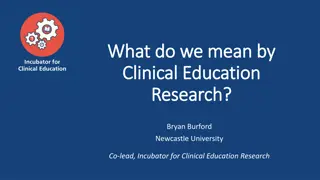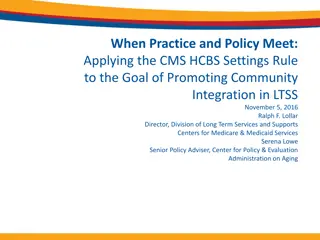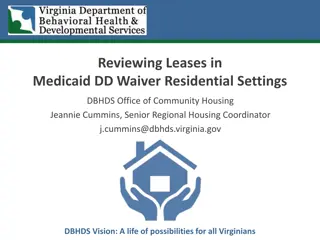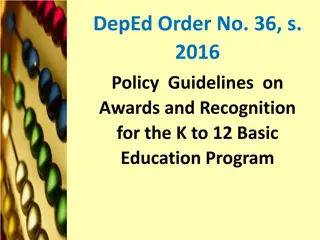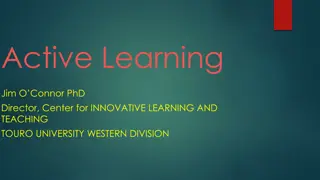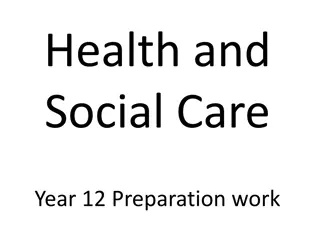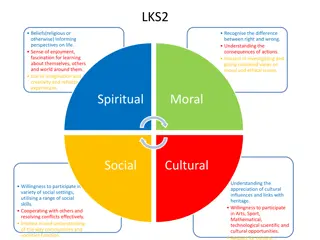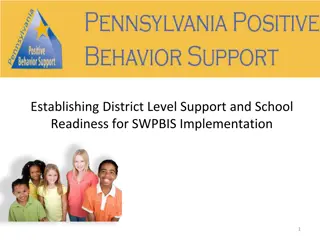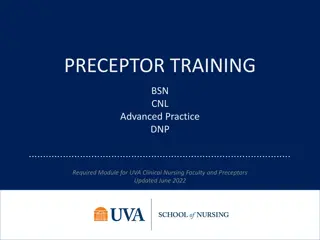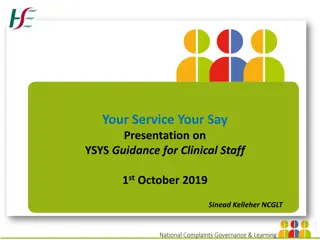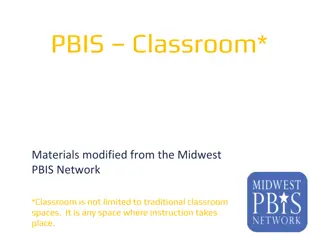Creating a Positive Learning Environment in Clinical Settings
A positive learning environment is essential for student well-being, empathy, and academic success. This involves integrating students effectively into clinical settings and providing constructive feedback. Conversely, a negative environment can lead to burnout and cynicism. Addressing student mistreatment, such as belittlement and discrimination, is crucial for maintaining a safe learning atmosphere. Guidelines for student participation in healthcare services, as outlined in the Medicare Claims Processing Manual, highlight the importance of supervision and verification by teaching physicians.
- Learning environment
- Positive atmosphere
- Clinical education
- Student mistreatment
- Medicare guidelines
Download Presentation

Please find below an Image/Link to download the presentation.
The content on the website is provided AS IS for your information and personal use only. It may not be sold, licensed, or shared on other websites without obtaining consent from the author. Download presentation by click this link. If you encounter any issues during the download, it is possible that the publisher has removed the file from their server.
E N D
Presentation Transcript
CREATING A POSITIVE LEARNING ENVIRONMENT Positive/Safe Learning Environment Integration of Students into Clinical Learning Settings Providing Formative and Summative Feedback
The learning environment is the physical, social, and psychological context in which a student learns. A supportive learning environment contributes to student well-being and enhances student empathy, professionalism, and academic success, whereas an unsupportive learning environment may lead to burnout, exhaustion, and cynicism. WHAT IS THE LEARNING ENVIRONMENT?
SAFE LEARNING ENVIRONMENT STUDENT MISTREATMENT The Association of American Medical Colleges (AAMC) identifies eight general areas of student mistreatment: Public belittlement or humiliation Threats of physical harm or actual physical punishment Requirements to perform personal services, such as shopping Being subjected to unwanted sexual advances Being asked for sexual favors in exchange for grades Being denied opportunities for training because of gender, race/ethnicity or sexual orientation Being subjected to offensive remarks/names directed at you based on gender, race/ethnicity or sexual orientation Receiving lower grades or evaluation based on gender, race/ethnicity or sexual orientation
Medicare Claims Processing Manual Chapter 12 - Physicians/Nonphysician Practitioners 100.1.1 - Evaluation and Management (E/M) Services (Rev. 3971, Issued: 02- 02- 18, Effective: 01-01-18, Implementation: 03- 05- 18) B. E/M Service Documentation Provided By Students Any contribution and participation of a student to the performance of a billable service (other than the review of systems and/or past family/social history which are not separately billable, but are taken as part of an E/M service) must be performed in the physical presence of a teaching physician or physical presence of a resident in a service meeting the requirements set forth in this section for teaching physician billing. Students may document services in the medical record. However, the teaching physician must verify in the medical record all student documentation or findings, including history, physical exam and/or medical decision making. The teaching physician must personally perform (or re-perform) the physical exam and medical decision making activities of the E/M service being billed, but may verify any student documentation of them in the medical record, rather than re- documenting this work
SAFE LEARNING ENVIRONMENT STUDENT MISTREATMENT The Association of American Medical Colleges (AAMC) identifies eight general areas of student mistreatment: Public belittlement or humiliation Threats of physical harm or actual physical punishment Requirements to perform personal services, such as shopping Being subjected to unwanted sexual advances Being asked for sexual favors in exchange for grades Being denied opportunities for training because of gender, race/ethnicity or sexual orientation Being subjected to offensive remarks/names directed at you based on gender, race/ethnicity or sexual orientation Receiving lower grades or evaluation based on gender, race/ethnicity or sexual orientation
Set expectations Identify feedback Establish mutual goals Safe Environment Reinforce the positive Make it bidirectional
UNDERSTAND GENERATIONAL DIFFERENCES Millennials Learn Differently than Previous Generations Structured Upbringing Concise communication using technology Immediate gratification Transparency in Relationships
Students Will Learn And Function Best When Students have structure SET EXPECTATIONS Give tasks and explain the context and reasoning behind the task this will support autonomy in the future Students have a structure that allows them to take responsibility Allow autonomy and allow students to know they have autonomy this conveys trust Allow ownership ownership enables the hardest work Students have a supportive environment Be available and provide support Avoid paternalistic or authoritarian approach Praise and positive reinforcement everyone needs to succeed a little each day Students need expert coaching Precepting = coaching SAFE LEARNING ENVIRONMENT Kackman, J. Leading Teams. 2002. Harvard Business School Publishing Co. Boston. Dutton, J. Energize Your Workplace. 2003. John Wiley & Sons, Inc. Hoboken, NJ.
Assessment is the opportunity to consider the stage and progress of the learner. It flows naturally once expectations are set Feedback is the opportunity to turn an assessment into a vehicle for growth for the learner


